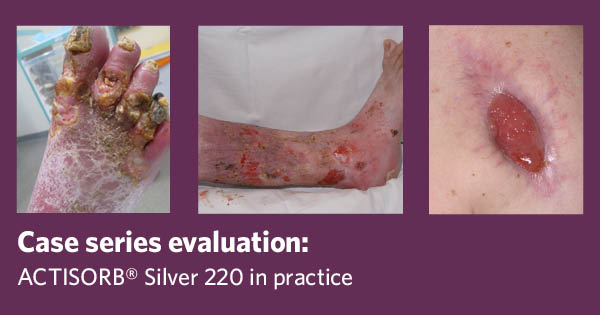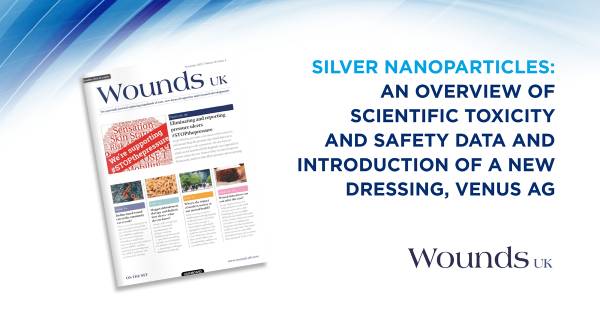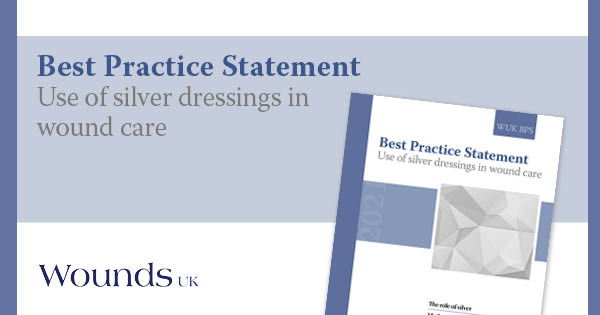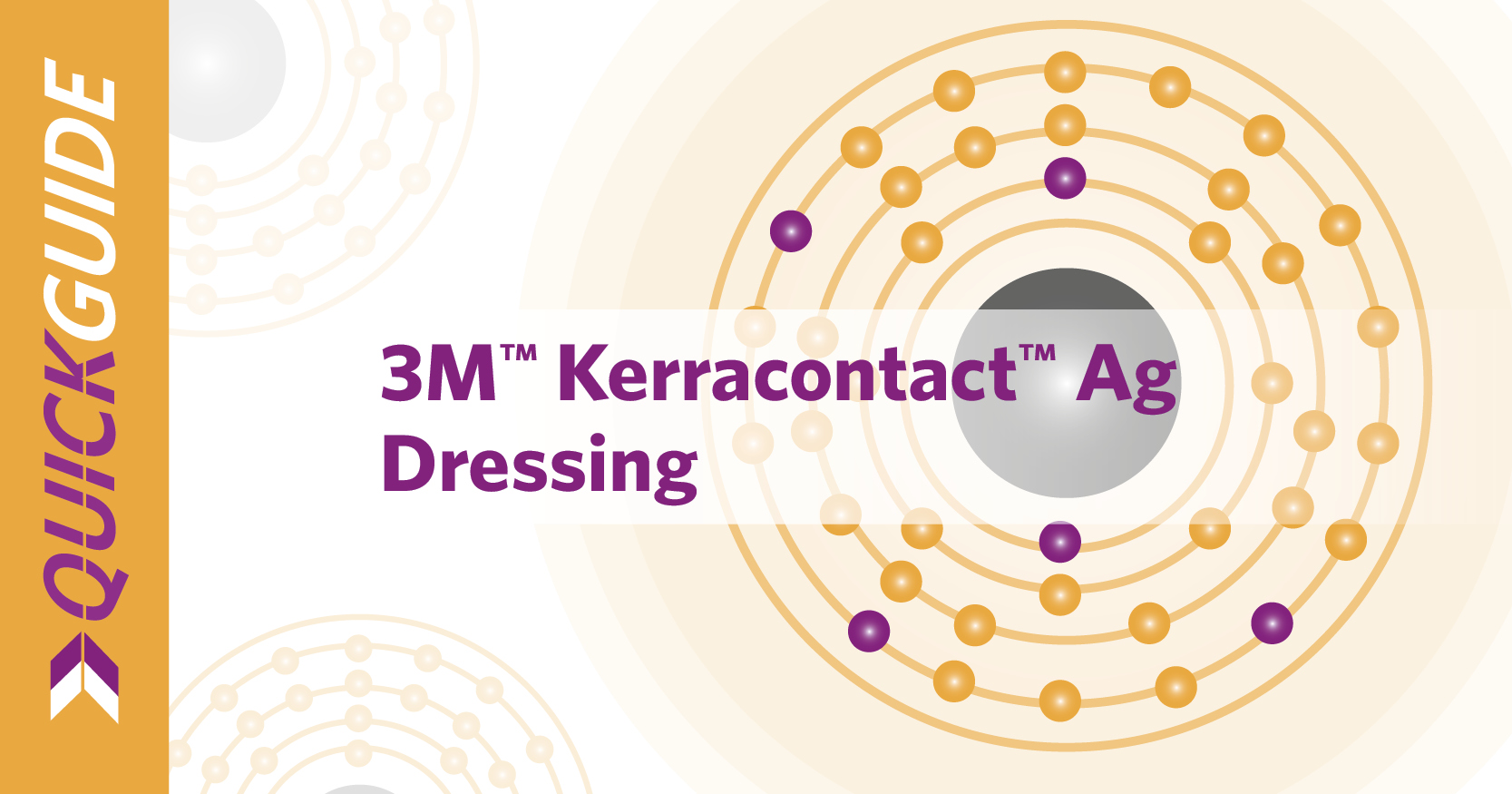ACTISORB® Silver 220 (Systagenix) is composed of a sealed non-woven nylon sleeve containing activated charcoal impregnated with metallic silver. It has been indicated for use as an antimicrobial and odour-control dressing for more than 25 years (Hampton, 2001; Leak, 2002; Keriheul, 2009; 2010; White, 2013).
Charcoal is extremely porous on activation, a process in which the charcoal is heated to approximately 1000°C in the absence of oxygen, achieved either by steaming or heating in a vacuum (Marsh and Rodriguez-Reinoso, 2006). The result is activated charcoal, with large pores that increase the surface area of the charcoal, which increase its adsorption capabilities.
It also has been shown that an activated charcoal dressing — such as ACTISORB Silver 220 — can adsorb bacteria, viruses and various other biochemicals in vitro and in vivo (Drucker et al, 1977; Naka et al, 2001). Cell lysis produces endotoxins, which have an inflammatory effect and can disrupt the healing process; activated charcoal also adsorbs these endotoxins, thus giving it anti-inflammatory properties (Fleck, 2006).
Silver has long been shown to have an antimicrobial effect and has been used for medicinal purposes since the 19th century (White, 2001). Discussion on the antimicrobial action of silver in wound care has centred on interference with the bacterial electron system, binding to DNA of bacteria and spores, impairing cell replication, and binding causing receptor function and structural damage (Thurman and Gerba, 1989). In ACTISORB Silver 220, bacteria are bound to the activated charcoal cloth fibres and in addition to the adsorption effect, silver ions kill the bacteria and so reduce bacterial burden in the wound. Kerihuel (2009) also suggested that ACTISORB Silver 220 participated in the reduction of biofilm growth.
Evidence for ACTISORB Silver 220
Clinical studies have demonstrated activated charcoal cloth with silver to be effective in reducing malodour and exudate in leg ulcers; researchers have also suggested it was cost-effective in terms of reduced frequency of dressing change and improved healing compared to prior treatments (Millward, 1991).
Studies have shown that chronic wounds dressed with activated charcoal cloth with silver exhibit reduced bacteria levels after 2 weeks (Verdú Soriano et al, 2004). Keriheul (2010) found an increase in signs of healing in leg ulcers (ACTISORB Silver 220) and reductions in the wound area within a week using ACTISORB Silver 220. Adverse event incidence was low, and the dressing was well tolerated.
These findings are supported by other studies that have demonstrated improved healing rates in leg ulcers (Wunderlich and Orfanos, 1991). Further work on leg ulcers and pressure ulcers by Tebbe and Orfanos (1996) demonstrated a reduction in frequency of dressing change, a reduction in the time to change the dressing, a reduction in wound size, and an increase in granulation and epithelial tissue in both leg and pressure ulcers. Keriheul and Dujardin-Detrez (2003) found similar results, with clinical benefit identified across a variety of wound situations.
Using Actisorb Silver 220
In addition to activated charcoal and metallic silver, ACTISORB Silver 220 features a non-woven nylon sleeve that reduces the risk of adherence to the wound bed, reducing trauma on removal. The dressing is not designed to absorb exudate, so it may need to be used with a secondary absorbent dressing in wounds with moderate to heavy levels of exudate.
The ACTISORB Silver 220 instructions for use leaflet — found inside the product packaging — should always be referred to before use. The dressing should be removed before magnetic resonance imaging or radiotherapy (Wounds UK, 2013).
In addition to the specific indications of the product, ACTISORB Silver 220 may be useful in managing malodour and bacterial burden and the associated signs in the following wound types, as will be explored in the case series that follows:
- Friable/overgranulated tissue
- Percutaneous endoscopic gastrostomy tubes
- Malignant/palliative wounds
- Necrotic toes
- Fungal infection (Table 1, p3).
Conclusion
The case series evaluation shows the wide range of wounds for which the combination of activated charcoal and metallic silver can achieve treatment goals including elimination of infection, control of malodour and progress towards healing. In all cases, ACTISORB Silver 220 was found to be easy to fold and position, staying in place over a variety of anatomical areas with a range of sizes. Patients were very comfortable with the dressing, and dressing-change pain was low across the board. Patients also reported improvement in quality of life due to resolution of malodour, which tended to make them very self-conscious and embarrassed.
Overall, the literature and this series of case studies promote the role of an activated charcoal/metallic silver dressing as an effective and viable option for managing infection, odour and healing.







